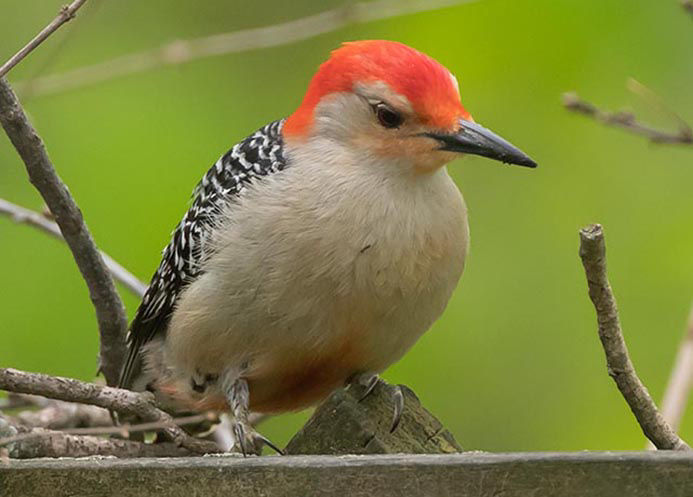Revealing the Keys of Woodpeckers: Behavior, Habitat, and A Lot More
Woodpeckers, with their special habits and specialized adaptations, have long fascinated scientists and nature enthusiasts alike. By uncovering the mysteries bordering woodpeckers' actions and environment selections, a much deeper understanding of these bird wonders emerges, offering a glimpse right into their fascinating globe.
Woodpecker Actions Insights
In analyzing woodpecker habits, a fascinating display of specialized skills and adaptations emerges, shedding light on their remarkable ecological particular niche - Woodpeckers in Florida. Woodpeckers, recognized for their distinct drumming on trees, have a range of behavioral traits that add to their survival and success in their setting. One vital habits is their drumming, which serves numerous functions such as communication, developing area, attracting friends, and finding food sources. This balanced pecking likewise showcases their remarkable toughness and endurance, as they can hammer away constantly at broadband without causing injury to themselves.
In addition, woodpeckers display an unique feeding habits characterized by their capacity to essence insects from tree bark utilizing their specialized beaks. Their long, barbed tongues help in catching target, while their strong neck muscular tissues offer security and precision throughout pecking motions. This feeding method permits woodpeckers to gain access to surprise insect larvae and extract them with exceptional performance.
Habitat Preferences and Choice
What factors affect the habitat preferences and selection of woodpeckers? One essential element influencing woodpecker habitat choice is the accessibility of appropriate nesting sites. Woodpeckers usually choose forests with a mix of mature trees that provide enough possibilities for dental caries excavation.
Furthermore, woodpeckers show a preference for habitats with a plentiful supply of food sources. They are primarily insectivorous, feeding on beetles, ants, larvae, and various other bugs found in decaying timber or tree bark. Woodpeckers tend to prefer wooded locations with a varied insect population to fulfill their nutritional needs.
Moreover, the visibility of dead or decaying trees is another crucial consider woodpecker habitat option. These trees not only provide food resources but additionally provide suitable substratum for cavity read this excavation. Dead trees are essential for the upkeep of healthy woodpecker populaces, as they play an important duty in the woodpeckers' life cycle and ecosystem characteristics.
Feeding Habits and Diet Plan Composition
Woodpeckers demonstrate a specialized feeding habits concentrated on foraging for insects within different environments. In enhancement to insects, woodpeckers likewise take in tree sap, fruits, nuts, and seeds, including variety to their diet depending on the season and schedule of food sources.
The foraging strategies of woodpeckers are well-adapted to their arboreal way of living (Woodpeckers in Florida). Their capacity to dig deep into timber not just gives them with food yet additionally aids in developing nesting dental caries and developing areas. Woodpeckers play an important function in preserving the health and wellness of forests by controlling insect populations and aiding in the decomposition of timber. Recognizing their feeding routines and diet plan structure is vital for conservation efforts aimed at maintaining these one-of-a-kind and useful birds.
Drumming Sounds and Interaction
Making use of fast drumming sounds on numerous surfaces, woodpeckers employ a distinct type of communication to signify area boundaries and bring in mates. This drumming actions is not just a means of interaction however additionally functions as a way for woodpeckers to develop their presence within a certain area. The strength, speed, and pattern of the drumming can convey crucial information to other woodpeckers in the location.
Woodpeckers utilize drumming sounds to reveal their presence in an area and to warn off prospective trespassers. The loud and repetitive nature of the drumming serves as a clear signal to various other woodpeckers that the area is currently claimed. This helps in lowering conflicts and lessening physical conflicts in between people.

Survival Adaptations and Specialized Composition

Conclusion
In verdict, woodpeckers exhibit unique behaviors, such as drumming audios for interaction, and have specialized makeup for survival in their chosen environments. Their feeding habits and diet view publisher site plan structure additionally demonstrate their flexibility to various environments. By comprehending these facets of woodpeckers, researchers and conservationists can better safeguard and maintain these fascinating birds and their environments.
Comments on “Native Woodpeckers in Florida: An Overview to Variety and Behaviors”